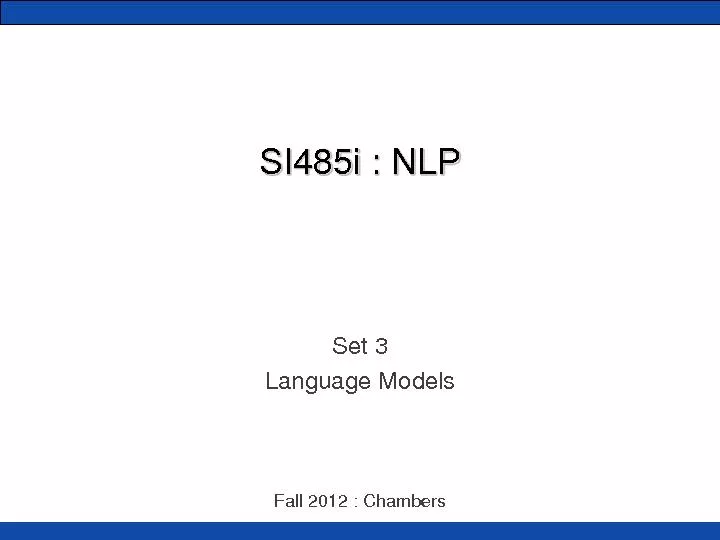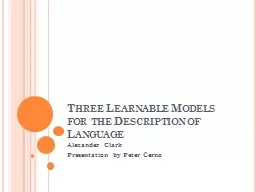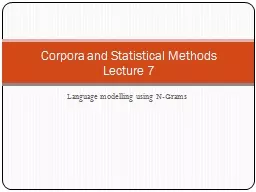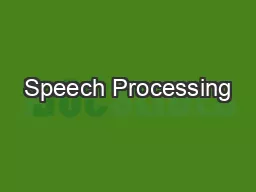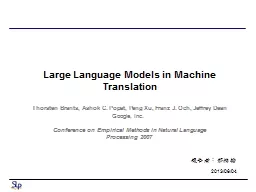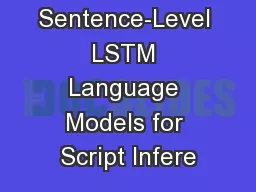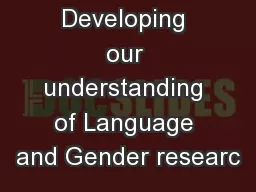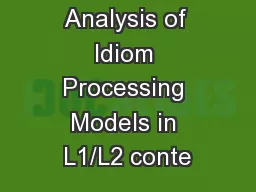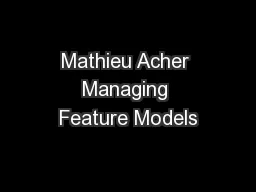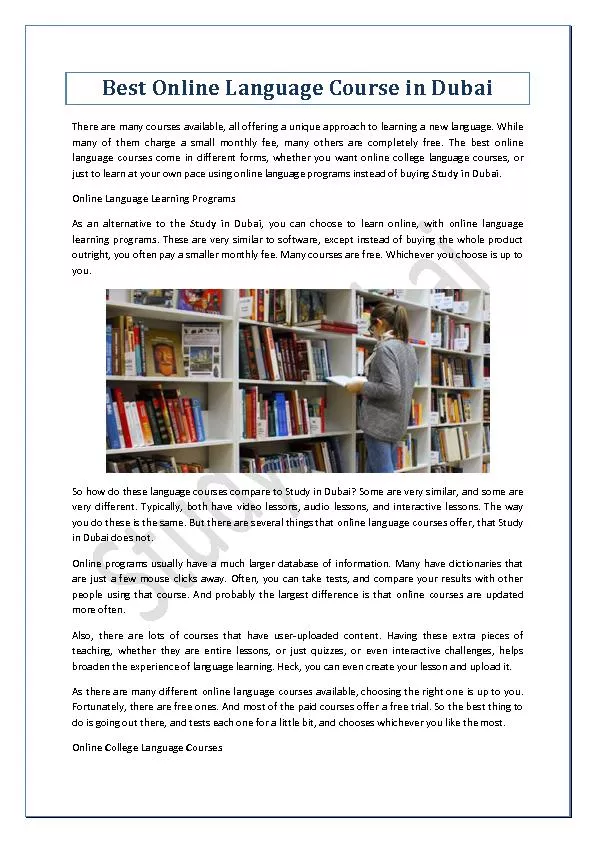PDF-Language Models
Author : olivia-moreira | Published Date : 2016-07-09
SI485i NLP Set 3 Fall 2012 Chambers Language Modeling x2022 Which sentence is most likely most probable I saw this dog running across the street Saw dog this I
Presentation Embed Code
Download Presentation
Download Presentation The PPT/PDF document "Language Models" is the property of its rightful owner. Permission is granted to download and print the materials on this website for personal, non-commercial use only, and to display it on your personal computer provided you do not modify the materials and that you retain all copyright notices contained in the materials. By downloading content from our website, you accept the terms of this agreement.
Language Models: Transcript
Download Rules Of Document
"Language Models"The content belongs to its owner. You may download and print it for personal use, without modification, and keep all copyright notices. By downloading, you agree to these terms.
Related Documents

